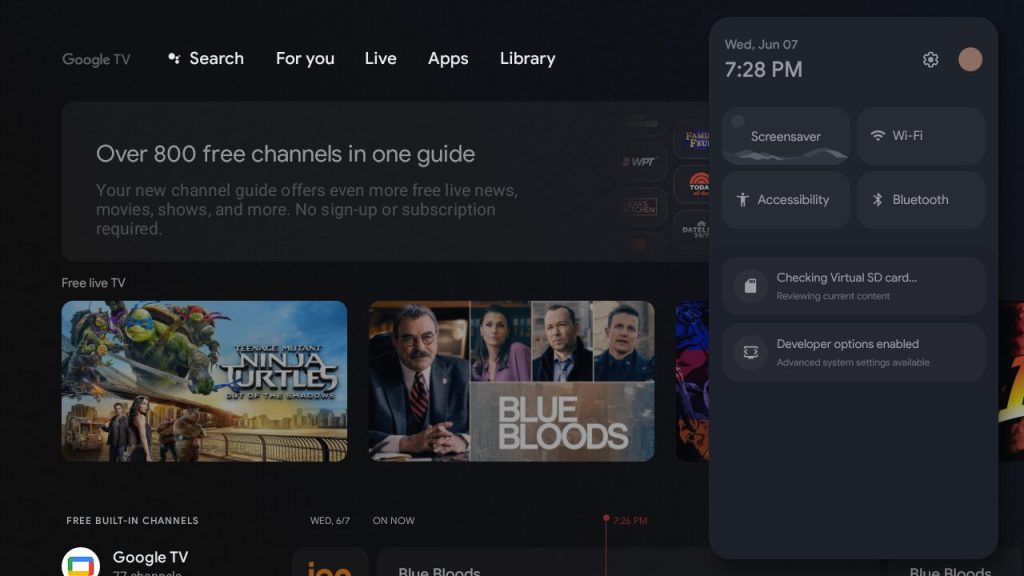Google has recently unveiled the Android 14 Beta 3 for Pixel devices, accompanied by an early preview of Android 14 for TV. Alongside this update, Google has made the decision to retire Android 13 for television devices, which will no longer be recommended in the emulator menu of Android Studio.
Despite the recent update for Chromecast with Google TV, which still runs on Android 12, it appears that Google has abandoned plans for an Android 13-based update for all Android TV and Google TV devices.

Android TV 14 features
As reported by Mishaal Rahman, there have been several notable changes in the code for Android 14 TV Beta. Firstly, the install dialogs on Android TV 14 now showcase an updated design specifically tailored for television devices. Additionally, the accessibility option has been elevated to a top-level menu item in Settings, making it easily accessible for users.
There have also been updates to the Power & Energy settings, which have been relocated under Settings > System, just below the “About” section. Furthermore, the “Energy Saver” option has been renamed to “Shut-Off Timer.”
Android TV 14 introduces expanded accessibility settings, with the “Services” option now called “Screen Readers” and placed at the top. Moreover, there is a new shortcut to adjust text scaling and a setting for bold text. Various other settings have been reorganized into appropriate categories.
Under Display settings, a new option called “format selection” has been introduced in Android TV 14. It allows users to choose whether content should always be converted to formats like Dolby Vision, HDR10, HDR10+, HLG, or SDR.
Energy efficiency has been given attention in Android TV 14 with the inclusion of four energy modes: Low, moderate, high, and unrestricted. Switching energy modes can optimize power consumption when the TV is not in use, depending on the level of network connectivity.
The display frame rate settings have been adjusted, with the “non-seamless” option now renamed to “Always.” This setting ensures that content frame rates are matched appropriately. Furthermore, if a connected display does not support seamless content transitions, Android TV 14 will notify the user.
Color correction settings have been introduced under the Accessibility section of Android TV 14. Users can access and customize color correction settings based on their preferences.
Certain appearance settings will only be visible if the build supports low power standby and other relevant DeviceConfig flags are enabled.
Android TV 14 allows users to select their preferred dynamic range for format conversion—System-preferred, Passthrough, or Force conversion—based on their preferences.
Looking ahead, Android TV 14 is preparing to enable call notifications from supported apps on the TV screen, with adjustable preferences for individual apps. Additionally, the Google TV launcher may include a “Headphones” option, making it more convenient to connect Bluetooth headphones without navigating through the settings.
Users will also have the ability to create shortcuts for their favorite apps in Android TV 14, allowing them to open specific apps using a custom button on the remote. Furthermore, they can easily view and switch between inputs for TV or other connected devices using the same custom button.
RELATED:
- Google Pixel 8’s Tensor G3 GeekBench scores reveals lackluster performance
- Android 14 Beta 3 Brings New Features and Compatibility Testing
- Apple Vision Pro: US-Only Launch, Zeiss Lens Requirement, Early AR Demo, and More
(Source)






